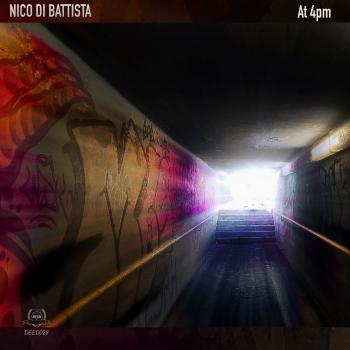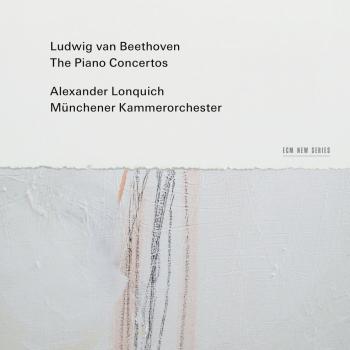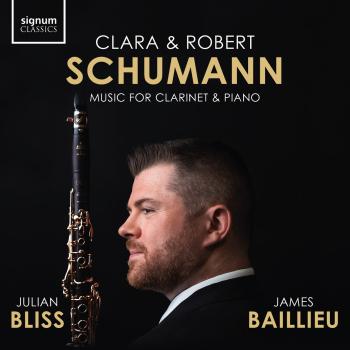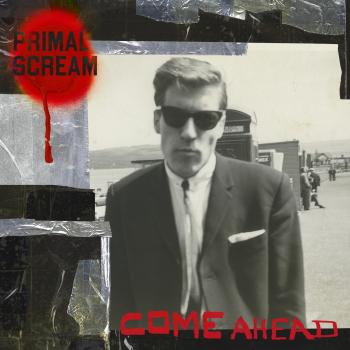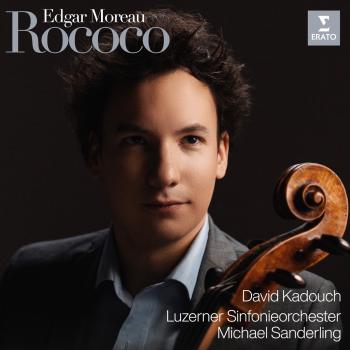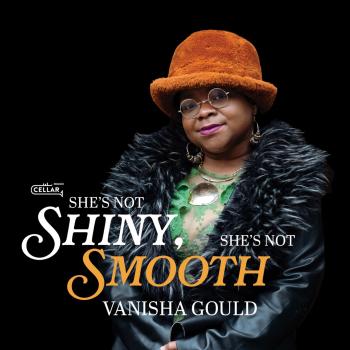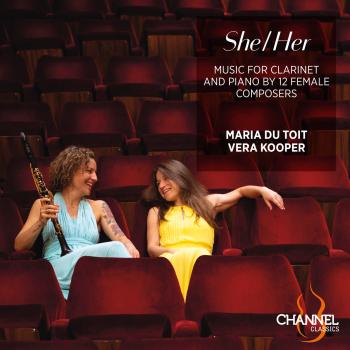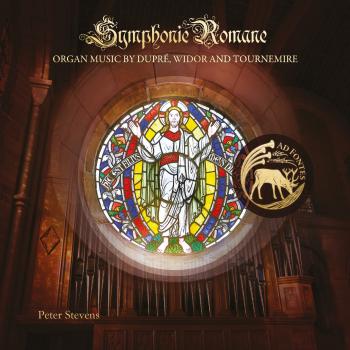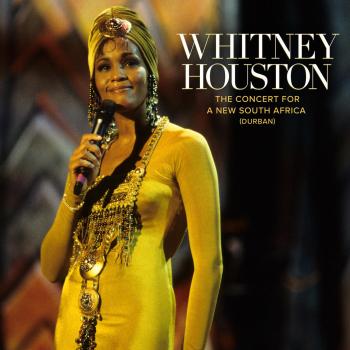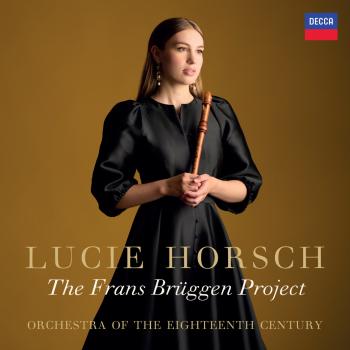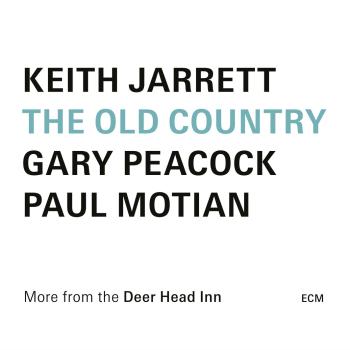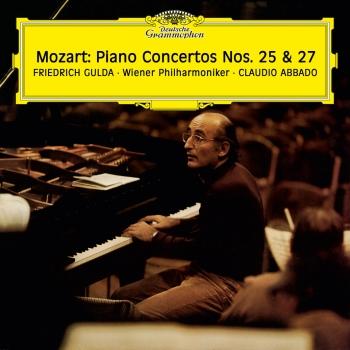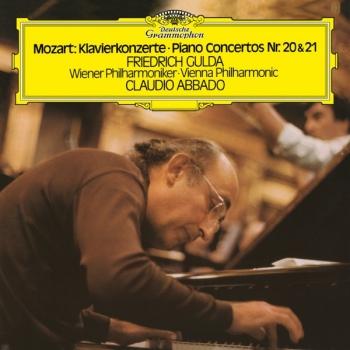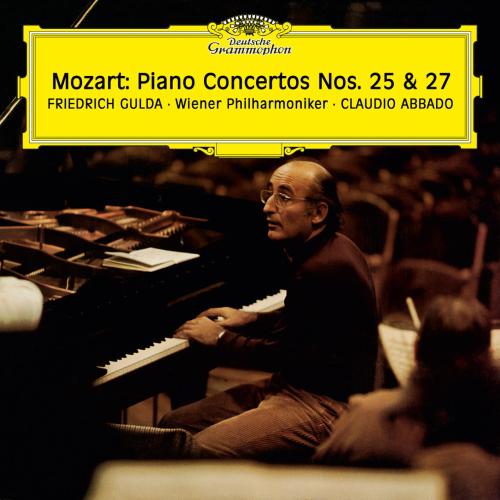
Mozart: Piano Concertos No. 25 & 27 (Remastered) Friedrich Gulda, Wiener Philharmoniker & Claudio Abbado
Album info
Album-Release:
1976
HRA-Release:
08.05.2020
Label: Deutsche Grammophon
Genre: Classical
Subgenre: Concertos
Artist: Friedrich Gulda, Wiener Philharmoniker & Claudio Abbado
Composer: Wolfgang Amadeus Mozart (1756-1791)
Album including Album cover
I`m sorry!
Dear HIGHRESAUDIO Visitor,
due to territorial constraints and also different releases dates in each country you currently can`t purchase this album. We are updating our release dates twice a week. So, please feel free to check from time-to-time, if the album is available for your country.
We suggest, that you bookmark the album and use our Short List function.
Thank you for your understanding and patience.
Yours sincerely, HIGHRESAUDIO
- Wolfgang Amadeus Mozart (1756-1791): Piano Concerto No.25 In C, K.503
- 1 1. Allegro maestoso - Cadenza: Friedrich Gulda 16:27
- 2 2. Andante 08:22
- 3 3. Allegretto 09:52
- Piano Concerto No.27 In B Flat, K.595
- 4 1. Allegro - Cadenza: Mozart 14:46
- 5 2. Larghetto 08:14
- 6 3. Allegro - Cadenza: Mozart/Gulda/Mozart 09:20
Info for Mozart: Piano Concertos No. 25 & 27 (Remastered)
The year 1786 was one of Mozart's most fruitful, full of diverse works in his most mature vein. It was crowned with the production of the C major Concerto, K. 503, and the "Prague" Symphony. This concerto is the last of the series in C major, and combines with its companion K. 491 in C minor, which in turn succeeded the A major K. 488, to make a trilogy that has been likened to the three great symphonies of two years later. Whatever the family similarities between the other pieces may be, there is no doubt that the C major Concerto, like the C major Symphony, show Mozart glorying in the complete mastery of means and offering a certain Olympian grandeur that at the same time does not exclude his more tender, eloquent vein.
Its first moment is the most grand and heroic, as is evident from its very opening bars, and it is conceived on a scale that goes beyond anything even Mozart had written until then. If Beethoven's first two concertos are often described as Mozartian, this one by Mozart can truly be said to look forward to the younger composer's music but the "advanced" nature of the writing in this opening movement does not exclude subsidiary ideas in Mozart's sweetest, most feminine1 vein. The development is of a size to match the prodigality of material in the exposition.
Friedrich Gulda, piano
Wiener Philharmoniker
Claudio Abbado, conductor
Digitally remastered
Friedrich Gulda
Gulda’s first tuition was at the Grossman Conservatory where between the ages of eight and twelve his teacher was Felix Pazofsky. At twelve he entered the Vienna Academy of Music where he studied piano with Bruno Seidlhofer and theory with Joseph Marx. After making his debut at the age of fourteen, Gulda went on to win the Geneva Piano Competition in 1946, subsequently touring Switzerland, Italy, Hungary and Czechoslovakia. Gulda rapidly gained an international reputation and gave his Carnegie Hall debut in 1950. His repertoire at this time concentrated on Bach, Mozart, Beethoven and Schubert; he gave complete cycles of the Beethoven sonatas, and played chamber music. During the 1950s he made a series of recordings for Decca, but in 1962 his career took a very different turn.
Disillusioned with the life of a virtuoso, Gulda turned his attention to jazz. He had already appeared with the Austrian All Stars on radio in 1956, and in the same year at New York’s famous Birdland, as well as at the Newport Jazz Festival. However, by the early 1960s Gulda had formed a small jazz group and a big band called the Eurojazz Orchestra. He played the wooden flute and baritone saxophone and composed his own works for jazz combinations. Gulda gave up the leadership of the Eurojazz Orchestra in 1966, founding a jazz competition in Vienna and opening a school of improvisation in Ossiach.
During the next three decades Gulda performed jazz and classical music, often together, juxtaposing both forms to stimulate his audiences. In 1990 he formed his Paradise Band with whom he gave performances combining Mozart, jazz improvisation and nightclub dance acts. Gulda worked with pianist Chick Corea, and, in the 1980s, with soprano Jessye Norman.
In the recording of Debussy’s préludes for Decca made in 1955 Gulda’s improvisatory qualities can be heard in Feuilles mortes, where his placing of chords is somewhat reminiscent of jazz pianist Bill Evans, and the whole piece has an air of being created on the spot (although perhaps without knowing of Gulda’s jazz career one would not think this). Of his Decca LP of the Chopin ballades, The Gramophone magazine stated, ‘…one will listen in vain for many traces of poetry or understanding. Gulda seems, at the start of each Ballade, to be waiting impatiently for the moment when he can bang off into specious virtuosity.’
In the late 1960s and early 1970s Gulda recorded Bach’s Das wohltemperierte Klavier complete and all of Beethoven’s piano sonatas. The sonatas, all of which he had previously recorded for Decca between 1950 and 1958, were recorded again for Amadeo in 1967 and were described in 1970 as playing that is ‘…architecturally clear, rather objective, and often quite astonishing in its uncomplicated directness. Those who favour tremendous colouristic variety and metaphysical philosophising had better look elsewhere…’ The reviewer goes on to describe the playing as being at times ‘downright brutal and aggressive’. Some of the Amadeo sonata recordings were issued on compact disc by Philips, and in 2005 Decca issued the earlier sonata cycle on eleven compact discs in their Original Masters Series. Gulda’s 1968 recording of Beethoven’s ‘Diabelli’ Variations Op. 120 has been described as ‘modernist’ and he plays with no repeats. Chamber music includes Beethoven cello sonatas with Pierre Fournier recorded in 1959, and Strauss lieder with Hilde Gueden.
In the mid 1970s Gulda recorded some Mozart piano concertos for Deutsche Grammophon with the Vienna Philharmonic Orchestra and Claudio Abbado. These are fine performances with the added interest in K. 467 and K. 503 of cadenzas by Gulda himself. In an interesting disc from the mid-1980s of the Concerto for Two Pianos K. 365, Gulda is partnered by jazz pianist Chick Corea. Also on the disc are Corea’s Fantasy for Two Pianos and Gulda’s jazz-inspired Ping Pong for two pianos.
Gulda was obviously a man who did not like any form of restriction. After his series of Decca recordings in the 1950s, he changed label and producer many times. His unorthodox attitudes led him to want to shock his audiences for classical music, and give performances that were both challenging and uncompromising.
This album contains no booklet.

